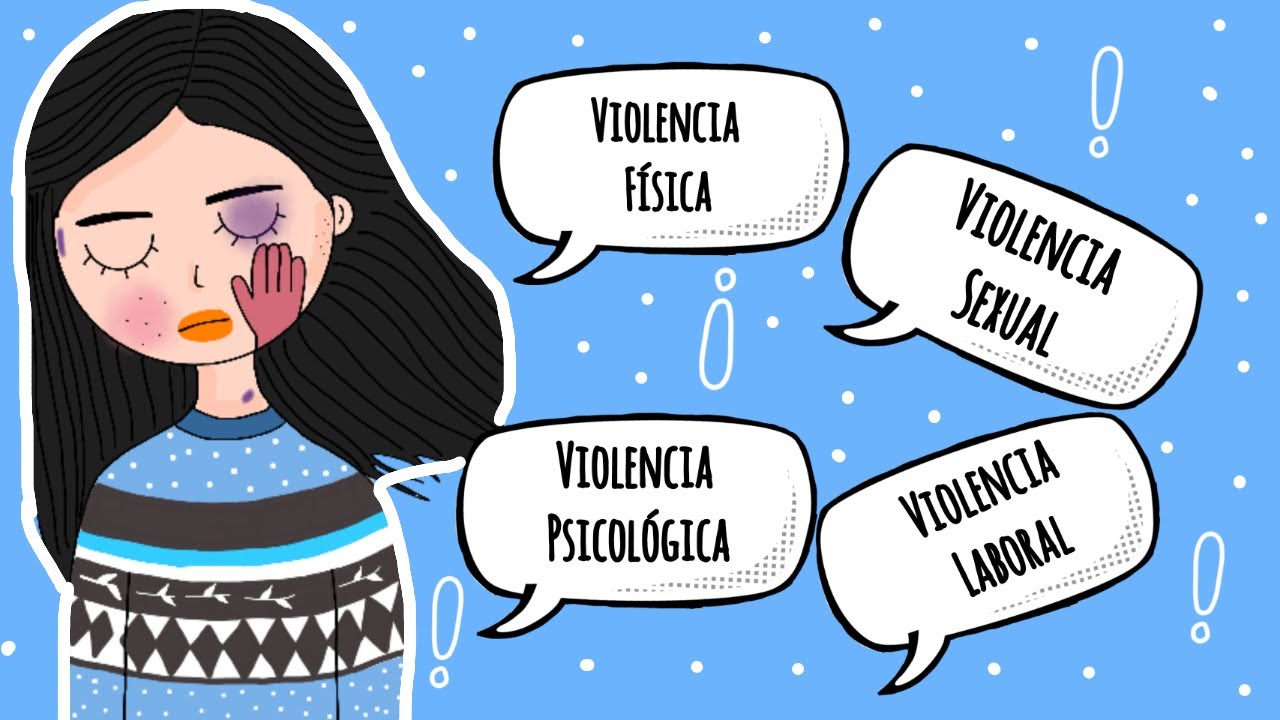In this article you will learn what are the types of violence against women, the most common where you will also see how women can do to avoid these kinds of abuse, we will see some aspects such as prevention and response to this abuse.

7 types of violence against contemporary women
The United Nations defines violence against women as “any gender-based violence that causes or is likely to cause physical, sexual or psychological harm to women, including threats, coercion or arbitrary deprivation of liberty, whether it occurs in public or private life. private.
What is violence against women?
Violence against women is gender discriminatory behavior that can cause any form of physical, psychological or emotional harm, and in any case can turn into verbal or physical abuse.
Today, we have collected all forms of violence against women, because nothing is secondary: everything is the result of discrimination against women by law or practice and continued discrimination by gender; from derogation or discrimination to personal or physical. Sexual assault or murder, all of them manifestations of the need for change, this is a very serious problem that must be resolved in order to achieve true equality between people.
What types of violence against women exist?
Similarly, we must understand and understand what types of violence exist in our society in order to fight against them. Consider that there is no abuse worse than others, because all of these abuses are caused by discrimination and ultimately lead to physical violence, oppression, and even death.
The most common types of violence against women include the following, which we will detail below:
1. Economic violence
Corresponds to any action (whether direct or legal) that attempts to cause economic / hereditary damage to property through restrictions; for example, women cannot own property or use their money or economic rights.
Even in countries with a high Human Development Index (HDI), this type of violence against women is one of the most common acts of violence, including any behavior that creates economic restrictions and aims to control money or deprive economic means , and thus live independently.
2. Workplace violence
Currently, in dozens of countries/regions, it is difficult for women to hold jobs, or their development or stability in the company is complicated by being women. This type of discrimination is also one of the most common, some examples are equal pay for equal work for men and women who hold the same position or are fired or unemployed due to possible pregnancy.
3. Institutional violence
It is a means for officials or authorities to hinder, delay or prevent their entry into public life, the fulfillment of certain policies and even the possibility for people to exercise their rights.
This video will show the different types of violence in against women:
4. Psychological violence
It can happen in a variety of situations, although family, partner, and family tend to be the three most common and consist of any behavior that we believe will degrade people or try to control our behavior or decisions.
Psychological abuse tends to be an entrance to other types of bullying (such as physical or sexual), so if we think that this type of violence is taking place we must be very careful. In case of doubt, the best way is to always call 100 and talk to professionals who can advise us.
5. Physical violence
It becomes any behavior that causes injury or physical pain and affects personal safety: bruises, cuts, burns, and even shoves are physical violence, and we can never forgive them.
6. Sexual violence
Any act that threatens or violates the sexual rights of women, including any form of sexual contact. Sexual violence is not limited to forcing women against their will, but also includes any form of harassment, exploitation, abuse or intimidation, whether it occurs within or outside of marriage or in any relationship.
7. Symbolic violence
It is a means of collecting stereotypes, information, values or signs that transmit and support the fact that relationships based on inequality, masculinity, discrimination or the naturalization of women in any subordinate role in society are constantly repeated.
Consequences of the types of violence for health
Physical, sexual and emotional abuse in couples; focusing on sexual violence bring very serious consequences in terms of physical, psychological and sexual health, even reproductive, in many cases in the short term and in others in the long term for women; but this also affects the children of these couples, at the same time causing great social and economic costs to women, family members and society itself. These types of violence achieve:
- Bring fatal consequences, such as murder or suicide.
- Create injuries, 42 percent of battered women describe some injury as a result of such abuse.
- Cause unexpected pregnancies, abortions, gynecological problems, sexually transmitted diseases, such as HIV.
- Intimate partner violence during pregnancy also increases the chance of miscarriage, stillbirth, premature birth, and low birth weight babies.
- These kinds of abuse can also be the cause of depression, post-traumatic stress disorder and other anxiety disorders, insomnia, eating disorders and suicide attempts.
Impact on children
- Children who grow up in violent families can suffer from various emotional and behavioral disorders. These diseases may also be related to criminal behavior or violence later in life.
- Intimate partner violence is also associated with increased mortality and morbidity in children under 5 years of age (for example, due to diarrheal diseases or malnutrition).
economic social costs
The social and economic costs of these complications are enormous and affect the entire society. Women will find themselves cut off from the world, unable to work, will lose their wages, will stop participating in daily activities, and the ability to care for themselves and their children will be weakened.
Prevention and response
Research on the effectiveness of prevention and response plans is becoming increasingly thoughtful. More resources are needed to strengthen the prevention and response to intimate partner violence and sexual violence, especially in the field of primary prevention, to prevent its occurrence.
Data from high-income countries show that awareness-raising interventions and counseling to improve victims' access to intimate partner violence services can effectively reduce intimate partner violence.
Family visits that include peripheral health services through trained nurses also show promise in reducing intimate partner violence. However, its use in low-resource settings has not been evaluated.
WHO response
At the World Health Assembly in May 2016, Member States approved an action plan to strengthen the role of the health system in responding to interpersonal violence, in particular violence against women and children.
WHO global plan of action to strengthen the role of health systems in a multisectoral national response to interpersonal violence, in particular interpersonal violence against women and girls, and children in general.
Were you interested in the article, we invite you to visit this link: 12 Social problems that destroy a country.




